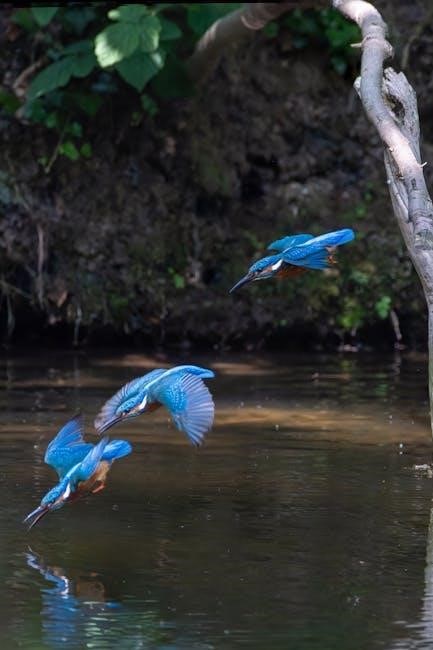
maine fly fishing guides
Maine offers unparalleled fly fishing experiences, with its pristine rivers and abundant trout populations․ Guides provide expert knowledge, ensuring anglers make the most of their time on the water․
1․1 Overview of Fly Fishing in Maine
Maine is renowned for its abundant fly fishing opportunities, with brook trout, salmon, and smallmouth bass thriving in its pristine rivers․ The Kennebec River and coastal areas offer diverse fishing experiences․ Anglers often use 8wt and 4wt rods, depending on the target species․ Local guides provide invaluable insights, ensuring a memorable and productive adventure on Maine’s iconic waters․
1․2 Importance of Hiring a Guide for Fly Fishing
Hiring a Maine fly fishing guide enhances your experience by providing local expertise, access to hidden spots, and tailored strategies․ Guides offer instruction for beginners and advanced anglers, ensuring a successful and enjoyable trip․ Their knowledge of seasonal variations and specific species behaviors maximizes your chances of catching fish, making your Maine fly fishing adventure unforgettable․
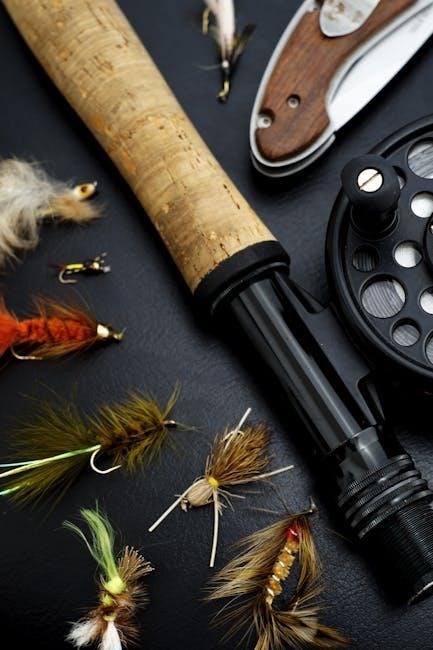
Key Destinations for Fly Fishing in Maine
Maine boasts iconic fly fishing destinations like the Kennebec River, known for its trout and salmon․ Other scenic rivers and streams offer diverse opportunities․ Local guides provide expert knowledge of these waters, ensuring anglers can explore prime spots tailored to their skill level and interests, making Maine a paradise for both novice and experienced fly anglers alike․
2․1 The Kennebec River
The Kennebec River, stretching 170 miles through Maine, is a premier fly fishing destination․ Known for its trout and salmon, the river offers diverse sections, from fast-moving currents to deep pools․ Local guides provide expert insights, helping anglers navigate its waters and target species effectively, making it a must-visit for both experienced anglers and newcomers to Maine’s fly fishing scene․
2․2 Other Prominent Rivers and Streams
Beyond the Kennebec, Maine boasts other exceptional fly fishing destinations like the Penobscot and Androscoggin rivers, known for their trout and salmon populations․ The Allagash Wilderness Waterway offers remote, pristine fishing opportunities, while smaller streams like the Rapid River provide intimate settings for anglers․ Each location offers unique challenges and rewards, making Maine a diverse paradise for fly fishing enthusiasts and guides alike․
Types of Fly Fishing in Maine
Maine offers both freshwater and saltwater fly fishing opportunities, catering to diverse angling interests․ Freshwater fishing targets trout and salmon, while saltwater options include coastal species like stripers and shad․
3․1 Freshwater Fly Fishing
Freshwater fly fishing in Maine is renowned for its abundant brook trout, salmon, and smallmouth bass․ Rivers like the Kennebec offer prime spots, with guides providing expert tips on gear and techniques․ Anglers often use 4wt rods for smaller species, while larger trout may require heavier setups․ The state’s pristine lakes and streams create ideal conditions for a memorable fishing experience․
3․2 Saltwater and Coastal Fly Fishing
Maine’s rugged coastline offers exceptional saltwater fly fishing opportunities, targeting species like striped bass and bluefish․ Guides specialize in navigating tidal patterns and coastal currents, ensuring anglers maximize their chances․ With expertise in seasonal fish migrations and gear selection, they provide invaluable insights for both novice and experienced anglers seeking to explore Maine’s diverse marine fisheries․
Gear and Equipment Recommendations
Quality fly rods, reels, lines, and leaders are essential for Maine’s diverse fishing conditions․ Waders, tippet, and a well-stocked fly box ensure readiness for any situation․
4․1 Fly Rods and Reels
Selecting the right fly rod and reel is crucial for success in Maine’s waters․ A 4wt to 8wt rod is ideal for targeting trout, salmon, and bass․ Graphite rods offer sensitivity and strength, while reels with reliable drag systems ensure control over larger fish․ Custom, handcrafted rods, like those named after Maine’s waterways, blend tradition with performance, suiting both novice and experienced anglers․
4․2 Essential Flies for Maine Waters
Essential flies for Maine waters include dry flies like the Elk Hair Caddis and Stimulator for surface action, while streamers such as the Woolly Bugger and Clouser Minnow imitate baitfish for larger species․ Nymphs like the Hare’s Ear and Pheasant Tail are effective for subsurface feeding․ Matching local insect hatches and seasonal patterns ensures success, making these flies indispensable for targeting trout, salmon, and bass in Maine’s diverse fisheries․
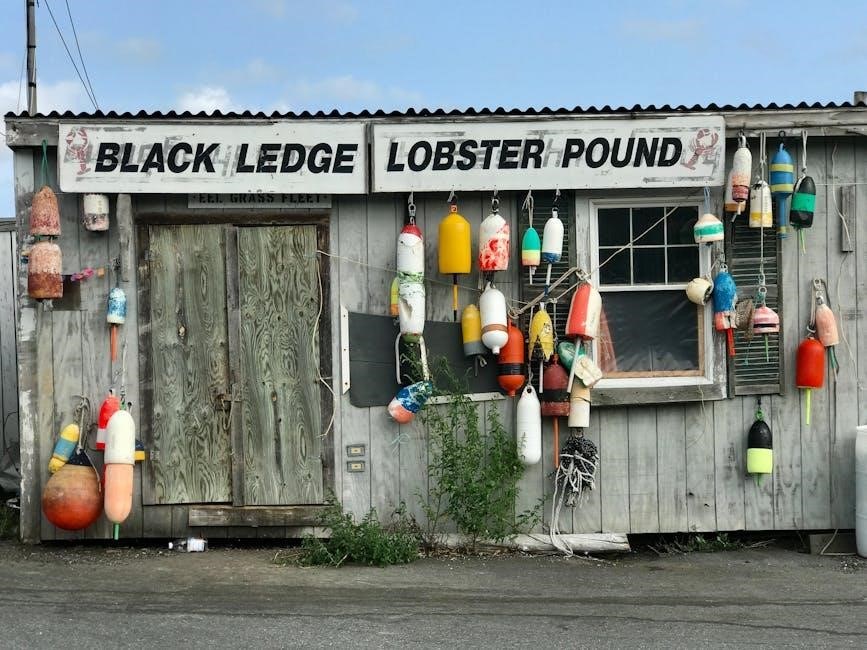
Role of Maine Fly Fishing Guides
Maine fly fishing guides offer expert knowledge of local waters, effective techniques, and personalized instruction, ensuring anglers maximize their fishing experience and connect with Maine’s vibrant fish populations․
5․1 Expertise and Knowledge of Local Waters
Maine fly fishing guides possess deep knowledge of local waters, including river systems, fish behavior, and optimal fishing spots․ Their expertise ensures anglers target species effectively, adapting techniques to seasonal changes and water conditions․ Guides often have years of experience, providing insights into Maine’s unique fisheries, enhancing the overall fishing experience for both novice and seasoned anglers․
5․2 Instruction and Tips for Beginners
Maine fly fishing guides excel at instructing novices, teaching essential techniques like casting, fly selection, and knot-tying․ They provide personalized tips on reading water, timing, and presentation․ Guides ensure beginners build confidence and skills, offering patience and tailored advice to enhance the learning experience and make fly fishing accessible and enjoyable for all skill levels in Maine’s scenic waters․
Regulations and Licensing
Fishing in Maine requires a valid license for residents and non-residents․ Guides must meet state certification standards, ensuring compliance with local regulations and expertise in sustainable fishing practices․
6․1 Fishing Licenses in Maine
In Maine, obtaining a fishing license is essential for both residents and non-residents․ Licenses can be purchased through the Maine Department of Inland Fisheries and Wildlife․ Anglers must provide identification and complete a brief application․ For non-residents, short-term licenses are available․ Visit mainefishingguide․com for more details on licensing requirements and to apply online․ Proper licensing ensures sustainable fishing practices and conservation efforts․
6․2 Guide Certification and Requirements
In Maine, fly fishing guides must be registered as Maine Guides, requiring a license from the Maine Department of Inland Fisheries and Wildlife․ Guides must undergo background checks, complete a written exam, and demonstrate expertise in fishing, first aid, and wilderness survival․ Additionally, many guides hold a USCG Captain’s license for coastal fishing․ Certification ensures a high standard of knowledge and safety for anglers․ Visit mainefishingguide․com for details on becoming a certified guide․
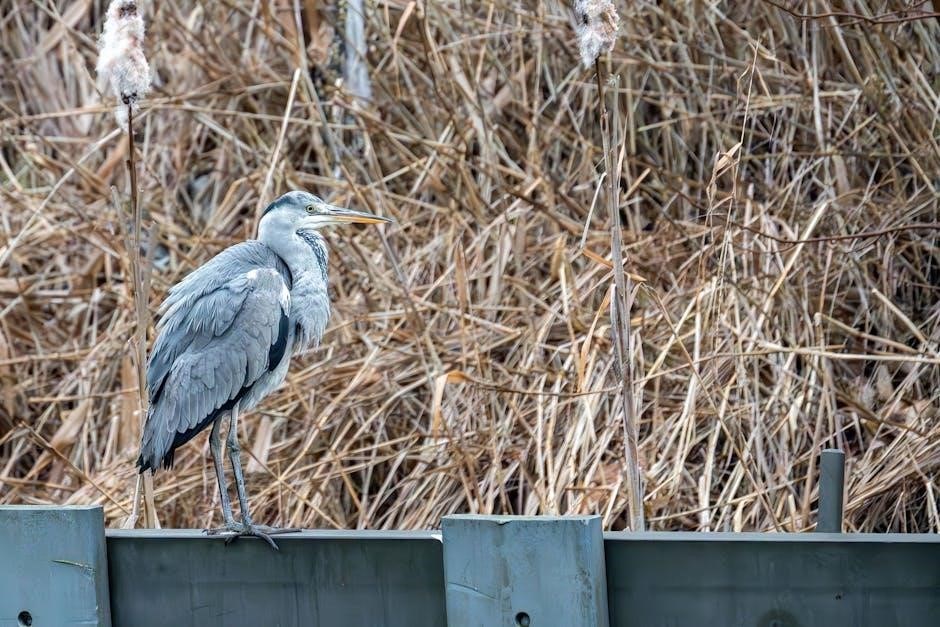
Best Times for Fly Fishing in Maine
Maine’s prime fly fishing seasons occur in spring and fall, with optimal conditions for trout and salmon․ Mild weather and active fish make these periods ideal for anglers․
7․1 Seasonal Variations
Maine’s fly fishing seasons vary significantly with spring offering fresh hatches, summer bringing warm-water species, fall providing cool temps for trout, and winter offering ice fishing opportunities․ Anglers must adapt techniques to match seasonal changes, ensuring success year-round in Maine’s diverse fisheries․
7․2 Peak Fishing Seasons for Specific Species
In Maine, Brook Trout thrive in spring and fall, while Salmon peak during summer and early fall․ Smallmouth Bass are active in summer, and Striped Bass are abundant in coastal areas during late spring and early summer․ Understanding these seasonal patterns helps anglers target specific species effectively․

Planning Your Fly Fishing Trip
Researching locations, booking guides, and obtaining permits are key steps․ Pack appropriate gear, check weather, and plan accommodations to ensure a smooth and enjoyable fishing experience․
8․1 Booking a Guide Service
Booking a reputable guide service ensures a tailored fly fishing experience․ Most guides accommodate up to two anglers per trip, offering personalized instruction and local expertise․ Research and contact guides in advance, especially during peak seasons․ Visit websites like maineflyguide․com or contact local outfitters to secure your spot․ Inquire about licenses, gear, and trip specifics to prepare adequately․
8․2 Preparing for Your Adventure
Before your trip, ensure you have proper gear, including rods, reels, and flies suited for your target species․ Check local regulations and obtain necessary licenses․ Dress appropriately for the season, with layers for changing weather․ Bring essential items like sunscreen, insect repellent, and a first-aid kit․ Consult with your guide to confirm specific gear recommendations and any additional requirements for a successful outing․
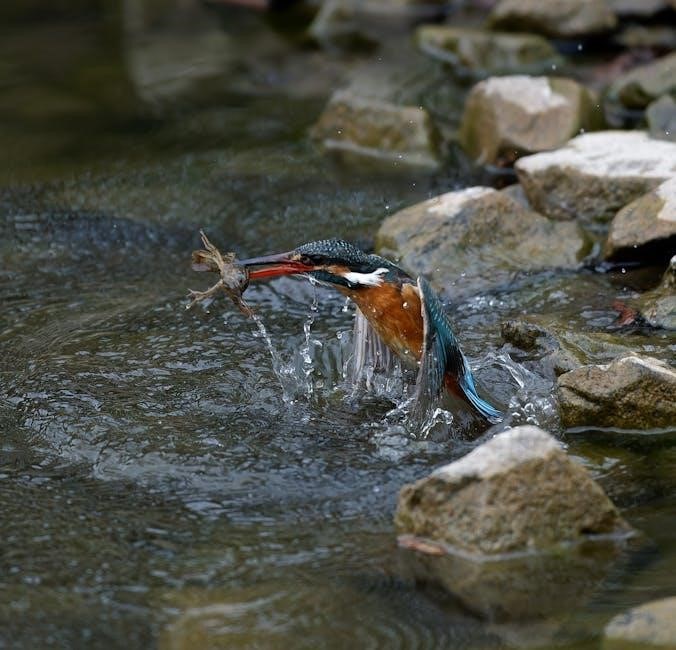
Fly Fishing Techniques
Maine fly fishing involves various techniques like nymphing, dry fly, and streamer fishing․ Each method targets specific species and water conditions, requiring precision and skill․
9․1 Nymphing and Dry Fly Techniques
Nymphing involves submerging flies beneath the surface to mimic aquatic insects, while dry fly fishing uses floating flies to imitate hatching insects․ Both techniques require precise casting and a deep understanding of trout behavior․ Guides often recommend nymphing in deeper pools and dry flies during hatches for optimal results in Maine’s rivers and streams․
9․2 Streamer Fishing Strategies
Streamer fishing involves using large, imitation flies that mimic baitfish or injured prey to attract larger predators like trout and salmon․ Guides often recommend weighted streamers for deeper pools and structure․ Effective retrieval techniques include steady strips or erratic pauses to provoke strikes․ Streamers are particularly effective in Maine’s rivers for targeting aggressive fish in varying water conditions․
![]()
Conservation Efforts
Maine’s fly fishing guides prioritize conservation, promoting sustainable practices to protect fisheries․ Habitat preservation and catch-and-release methods are key to maintaining healthy fish populations for future anglers․
10․1 Protecting Maine’s Fisheries
Maine fly fishing guides actively contribute to conservation by promoting catch-and-release practices and habitat restoration․ They collaborate with local organizations to ensure sustainable fishing methods, protecting trout and salmon populations․ These efforts maintain the ecological balance of Maine’s rivers and streams, preserving the state’s renowned fisheries for future generations of anglers to enjoy․
10․2 Sustainable Fishing Practices
Maine fly fishing guides emphasize sustainable practices, such as using eco-friendly gear and promoting catch-and-release fishing․ They educate anglers on responsible fishing methods to preserve fish populations and habitats․ By adhering to local regulations and minimizing environmental impact, these guides help maintain Maine’s pristine waters for future generations․
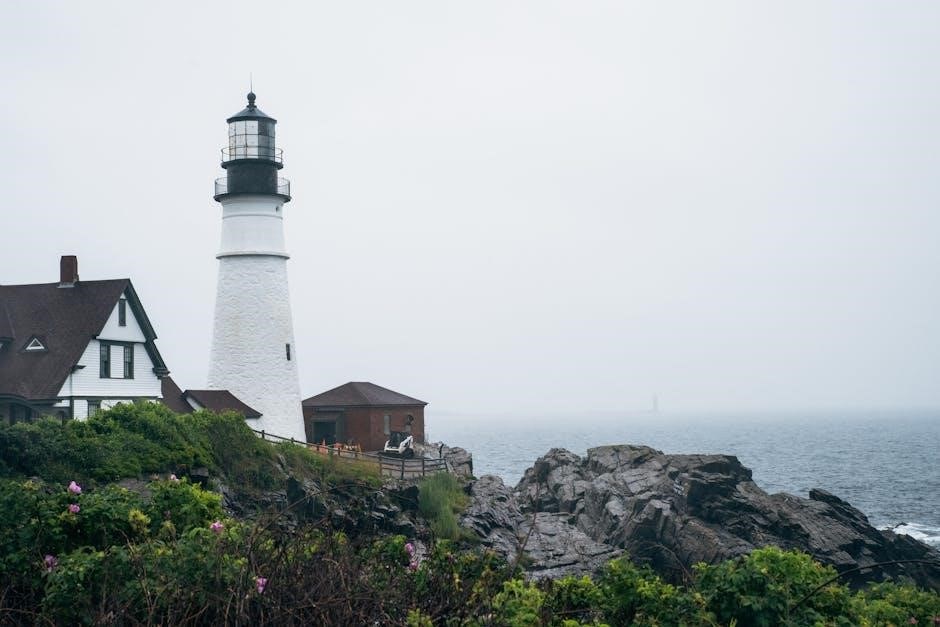
Cultural Significance of Fly Fishing in Maine
Fly fishing in Maine is deeply rooted in heritage and tradition, with locals and visitors alike cherishing its timeless appeal․ Community events and guide-led excursions preserve this cultural treasure․
11․1 Heritage and Tradition
Maine’s fly fishing heritage is rich, with generations passing down techniques and traditions․ Local master craftsmen build one-of-a-kind rods, reflecting the state’s iconic waterways․ The culture emphasizes respect for nature, preserving the sport’s timeless charm for future anglers, while guides share their expertise, keeping Maine’s fishing legacy alive and thriving․
11․2 Community and Events
Maine’s fly fishing community thrives through local events and gatherings, fostering camaraderie among anglers․ From organized trips to fly-tying workshops, these events celebrate shared passion and knowledge․ Local fly shops and guides often host workshops, while events like the Orvis Fly Fishing podcast highlight Maine’s fisheries․ These activities strengthen bonds and promote conservation efforts, ensuring the sport’s vibrant future․
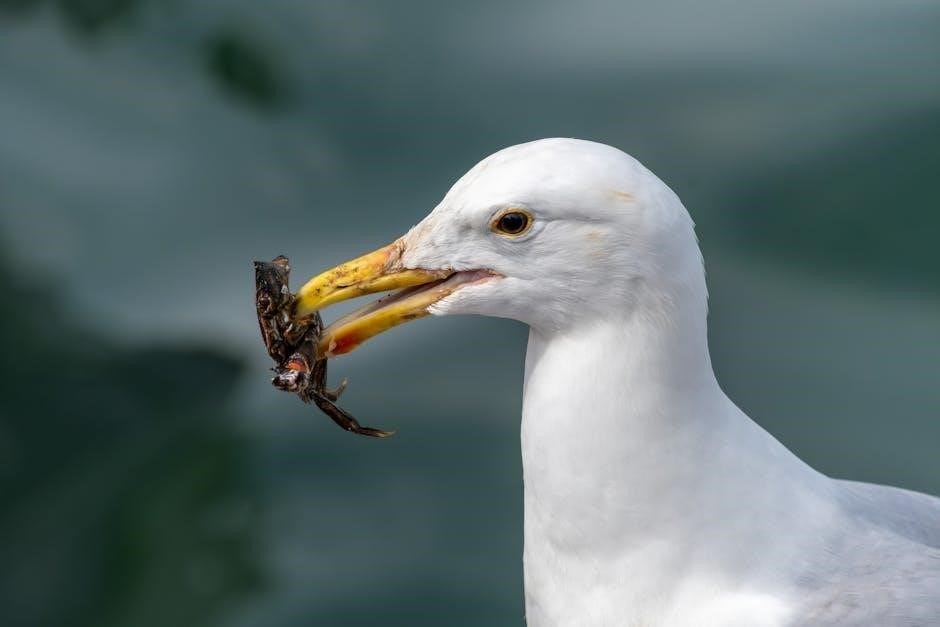
Safety and Etiquette
Safety and etiquette are crucial for a enjoyable fly fishing experience․ Always wear appropriate gear, be aware of surroundings, and respect the environment and fellow anglers․ Follow local regulations to ensure sustainable fishing practices and preserve Maine’s natural beauty for future generations․
12․1 Safety Tips for Fly Fishing
Always wear a properly fitted life jacket and wading boots with traction․ Use a wading staff for stability in currents․ Be aware of river conditions and weather changes․ Handle fish gently to avoid injury․ Ensure all gear is secure to prevent loss or tangling․ Fish with a partner when possible and carry a first aid kit․ Inform someone of your fishing plans and estimated return time․
12․2 Respecting the Environment and Other Anglers
Always practice catch-and-release fishing to preserve fish populations․ Avoid littering and dispose of trash properly to maintain pristine waters․ Respect fellow anglers by maintaining a safe distance and minimizing noise․ Be courteous when sharing the water, yielding to others when necessary․ Follow local regulations to protect sensitive habitats and wildlife․ Help conserve Maine’s natural beauty for future generations by adhering to sustainable fishing practices․
Keep the environment clean and undisturbed for all to enjoy․
Fly Fishing for Beginners
Fly fishing for beginners involves learning basic techniques, such as casting and knot-tying․ Start with essential gear like a fly rod, reel, and line․ Practice casting in calm waters and seek guidance from experienced guides to build confidence and skills․
13․1 Getting Started with Fly Fishing
Starting fly fishing requires basic gear like a rod, reel, and line․ Choose a medium-weight setup for versatility․ Learn fundamental casts, such as the overhead and roll cast․ Practice on calm water and consider hiring a guide for personalized instruction․ Begin with simple flies and focus on technique to build confidence and skills gradually․
13․2 Common Mistakes to Avoid
Beginners often overcast, causing fatigue and poor presentation․ Avoid using overly complex flies and ensure proper leader setup․ Neglecting local regulations and water conditions is another mistake․ Practice casting on land before wading and avoid sudden movements that spook fish․ Consulting a Maine fly fishing guide can help you bypass these common pitfalls and improve your chances of success․

Advanced Fly Fishing Strategies
Advanced anglers master techniques like reading water and matching the hatch, ensuring precise fly selection and presentation to target specific species effectively in Maine’s diverse waters․
14․1 Reading the Water
Reading the water involves identifying habitats where fish thrive, such as deep pools, riffles, and eddies․ Understanding current flows and structure helps anglers locate trout and other species․ Observing subtle changes in water depth and vegetation aids in targeting feeding zones, enhancing the effectiveness of fly placement and presentation in Maine’s rivers and streams․
14․2 Matching the Hatch
Matching the hatch involves selecting flies that mimic the natural insects fish are feeding on․ Observing the water for emerging bugs and their life stages helps anglers choose the right patterns․ Timing and presentation are crucial, as fish often target specific hatches․ Guides offer insights into local insect activity, ensuring the best fly choices for successful casting and hooking in Maine’s waters․
Maine’s pristine waters and expert guides create unforgettable fly fishing experiences․ With their mastery of local techniques and ecosystems, guides ensure anglers leave with lasting memories and new skills․
15․1 Final Thoughts on Maine Fly Fishing Guides
Maine fly fishing guides are invaluable for both novice and experienced anglers․ Their deep knowledge of local waters, techniques, and species ensures a rewarding experience․ Whether chasing brook trout or striped bass, guides enhance your adventure, providing insights and tips tailored to Maine’s unique fisheries․ Their expertise transforms a fishing trip into an unforgettable journey of discovery and skill refinement․
15․2 Encouragement to Explore Maine’s Waters
Maine’s diverse waters offer exceptional fly fishing opportunities, from brook trout in pristine rivers to striped bass along the coast․ With expert guides providing local insights, anglers can explore hidden gems and enjoy the state’s natural beauty․ Whether you’re a novice or seasoned, Maine’s unique fisheries promise unforgettable adventures and memorable experiences amidst stunning landscapes․